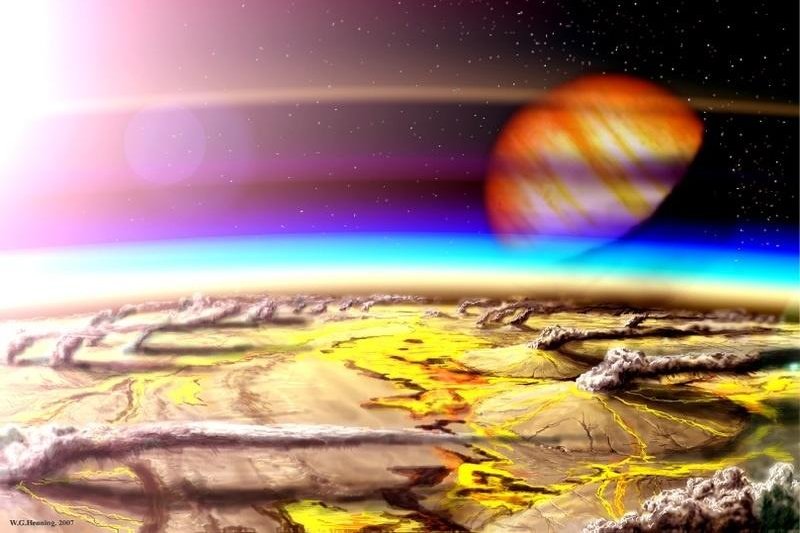An artistic rendering of a young Earth. Photo by Melissa Osgood/Cornell
ITHACA, N.Y., June 17 (UPI) -- Researchers at Cornell University have built an array of Earth-like planet models as a way to better understand the life-hosting potential of yet to be discovered exoplanets.
Every year, scientists are finding more exoplanets in the so-called habitable zone. In an effort to better understand the potential for these alien worlds to host life, researchers are looking back through Earth's own planetary history and creating computer models based on ancient conditions.
By doing so, researchers hope to predict the kinds of conditions they may encounter on exoplanets discovered by telescopes and observatories.
The models were recently detailed in a new study published in the Astrophysical Journal.
"We're going to see all kinds of planets in all kinds of stages in their own evolution, but we wanted to take four kinds of epochs from Earth history, as samples of what we might see," study author Sarah Rugheimer, a research associate at Cornell's Carl Sagan Institute, said in a press release. "With the next generation of missions, we expect to observe a wide diversity of extrasolar planets."
Especially important is understanding how various worlds interact with the bombardment of ultraviolet radiation. Radiation can be both a boon and detriment to life.
"Depending on the intensity, ultraviolet radiation can be both useful and harmful to the origin of life," said Lisa Kaltenegger, director of the Carl Sagan Institute. "We are trying to ascertain how much radiation other young Earths would get and what that could mean for the possibility for life."
Each model built by the scientists represents an epoch in Earth's history -- with each epoch offering a broad snapshot of an evolving world, with varying biological and chemical characteristics.
The first epoch is that of a pre-biotic world -- Earth at just 500 million years old. The young Earth's atmosphere is dominated by carbon dioxide. The second epoch finds Earth as it was 2 billion years ago. Oxygen is present in the atmosphere, and the first hints of life -- an active biosphere and mechanisms of biosynthesis -- have arrived.
The third epoch marks the emergence of multicellular life on Earth, just 800 million years ago; oxygen levels are still low, but quickly rising. The fourth epoch is modern Earth.
The modeling work helped researchers realize the importance of a moderately warm star. After the initial rise of oxygen, researchers realized radiation from super hot and super cold stars was mostly detrimental to life.















